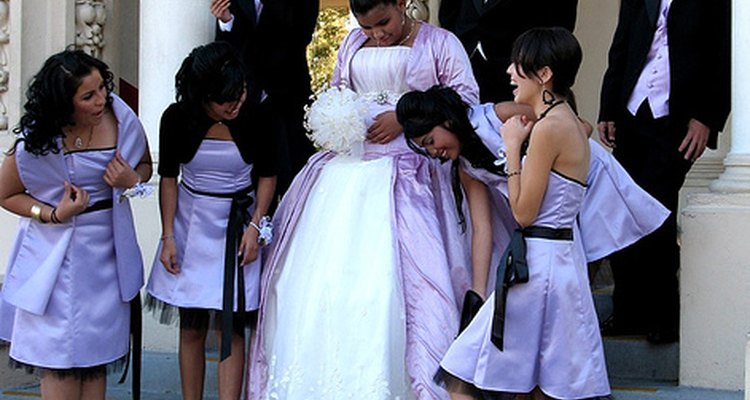
The Mexican quinceanera celebration is traditionally one of the most sacred and sentimental times in a young girl's life. It is the public welcoming party of the girl into adulthood as she celebrates her 15th birthday. Quinceanera comes from the Spanish words quince (15) and anos (years). Having reached physical capacity to reproduce, she is now treated as a young lady moving toward the socially expected goals of becoming a wife and a mother.
History
The practice has its roots in the ancient Aztec culture and dates to 500 B.C. In a special ceremony, young girls were honored in a ceremony that instructed them in their social role. In modern times, the ceremony takes on all the preparation and importance of a wedding. The religious ceremony and the party that follows are both reverent and festive.
Participants
The parents and godparents oversee the event. Other relatives are often called on to sponsor different aspects of the mass and the party. This not only shares the economic load but also provides a chance for all members of the family to show love and appreciation for the girl and her family.
The young lady chooses usually seven of her girlfriends or relatives to be Damas in her court. They accompany her in the mass and at the party.
Among her brothers, relatives and friends, she selects the same number of Chabalanes to join her court. It is common for the Chabalanes and the Damas to dance at the party together.
Other relatives and friends help pass out party favors to the guests.
Ceremony
During the ceremony or mass, the girl presents herself in a white dress at the altar with a bouquet. Sometimes the bouquet is an arrangement that contains one of her favorite dolls. She will leave the bouquet at the altar as a symbol of leaving childhood behind. Some choose to present the doll to a younger sister.
She also lights a candle as a recommitment of her baptismal vows made for her by her parents. Her spiritual growth is now her responsibility as a young adult.
Symbols
Symbols abound in the celebration of the quinceanera. When the girl dances with her father, she changes her flat shoes for a pair of heels. The waltz is her last dance as a girl and first as a young woman.
The gifts are very symbolic as well. She wears a tiara, a diamond-filled crown, as a sign of leaving childhood behind and her new princess status. A bracelet or ring symbolize the eternal circle of life.
The godparents give her a scepter to replace the doll and bouquet to complete her princess transformation.
Her new earrings serve as a reminder to listen to wise counsel and God's word. The cross around her neck reminds her of her faith. A rosary and prayer book are given to serve as help in her renewed devotion to God.
Benefits
The milestone of the quinceanera is a tradition that Mexican families would do well to conserve. It is a time of love and devotion of the family and friends involved to support and encourage a young girl making the leap into life as an adult. The memories created during this day will last a lifetime and serve as an inspiration for the young girl to fulfill her responsibilities and meet her challenges in her life ahead. The time and money spent are a worthy investment and produce lasting memories.
Related Articles

Quinceanera Rituals

Quinceanera Requirements

Things to Do for a Sweet Sixteen ...

What Is the Godparents' Responsibility ...

The Meaning of a Flower Girl in a ...

Traditional Duties of a Maid of Honor ...

Traditional African Wedding Attire

What Does the Corsage Symbolize?

What Can Small Boys Do to Be a Part of ...

Traditional Indian Gifts for Babies

Mexican Catholic Wedding Traditions

Romanian Orthodox Wedding Traditions

Gifts for an Indian Engagement

The Purpose of Christening

Hispanic Clothing History

What Does the Godmother Do for the ...

Traditional Chilean Wedding Attire

The Proper Attire for a Girl's First ...

The Customs of Filipino Wedding ...

Traditional Korean Wedding Gifts
References
- La Quinceanera: a celebration of budding womanhood
- The Aztecs; T. Wood; 1992
Writer Bio
Stephen Saylor is a bilingual educator and translator who has been writing since 2005. He has contributed articles to websites such as rockeros.net and XtremeMusic. He holds a Bachelor of Arts in Spanish from Michigan State University and a Master of Arts in education from San Diego State University.
Photo Credits
http://www.flickr.com/photos/janeslatest/